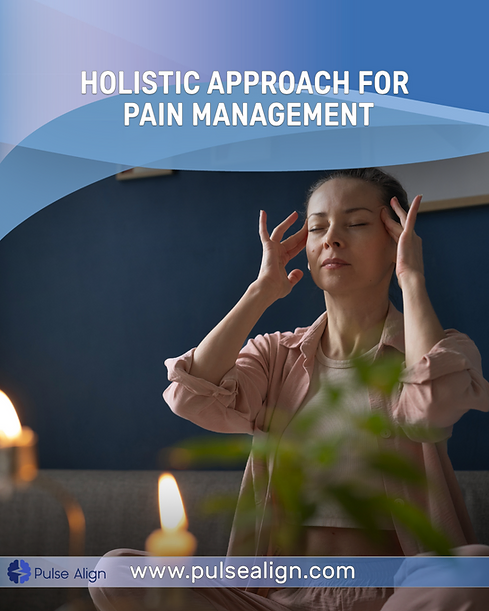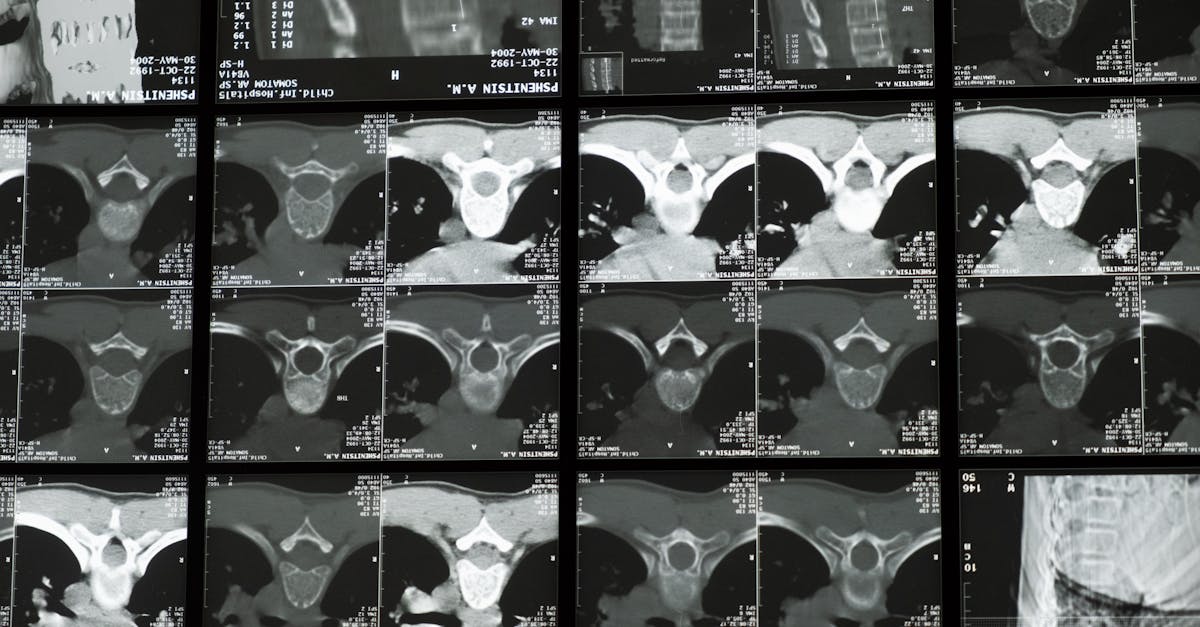Living with chronic pain can be debilitating, affecting every aspect of one’s life. Many conventional approaches to pain management focus solely on alleviating symptoms rather than addressing the root causes. However, a holistic approach to pain management aims to treat the individual as a whole, considering physical, emotional, and spiritual well-being.
In this blog post, we will explore six holistic approaches for pain management, with a particular focus on the benefits of Pulse Align and the importance of addressing root causes.
Understanding Holistic Approach
Holistic healthcare is a comprehensive approach to healing that considers the entire person—body, mind, and spirit—when addressing health issues. Unlike conventional medicine, which often focuses solely on treating symptoms, holistic medicine aims to identify and address the underlying causes of pain and illness.
The Importance of Addressing Root Causes
One of the fundamental principles of the holistic approach is the emphasis on addressing the root causes of pain and illness, rather than merely alleviating symptoms. By identifying and treating the underlying imbalances in the body, holistic therapies aim to promote long-term healing and well-being.
Mind-Body Therapies
Mind-body therapies, such as yoga, meditation, and mindfulness-based stress reduction, can be powerful tools for managing chronic pain. These practices help individuals cultivate a greater awareness of their bodies and minds, promoting relaxation, stress reduction, and pain relief.
Nutrition and Diet
Nutrition plays a crucial role in overall health and well-being, including pain management. A balanced diet rich in whole foods, fruits, vegetables, and lean proteins can help reduce inflammation and promote healing. Additionally, certain supplements, such as omega-3 fatty acids and turmeric, have been shown to have anti-inflammatory properties, making them beneficial for individuals dealing with chronic pain.
Physical Therapy and Exercise
Physical therapy and exercise are essential components of holistic pain management. Regular physical activity helps strengthen muscles, improve flexibility, and promote circulation, all of which can help alleviate pain and improve overall function. Additionally, physical therapy techniques, such as manual therapy and therapeutic exercises, can help address specific musculoskeletal issues contributing to pain.
Massage Therapy
Massage therapy is another holistic approach to pain management that can help reduce muscle tension, improve circulation, and promote relaxation. Different massage techniques, such as Swedish massage, deep tissue massage, and trigger point therapy, can target specific areas of pain and tension, providing relief and promoting healing.
The Six Pillars of Holistic Pain Management
Mind-Body Connection: At the heart of holistic pain management lies the recognition of the intricate connection between the mind and body. Research suggests that emotional stress and psychological factors can significantly influence the perception and experience of pain. By fostering mindfulness, meditation, and stress-reduction techniques, individuals can cultivate a resilient mind-body connection that fosters healing from within.
Nutrition and Diet: The foods we consume play a pivotal role in our overall well-being. A diet rich in anti-inflammatory foods, antioxidants, and essential nutrients can mitigate pain and inflammation, while also supporting the body’s natural healing processes. Embracing a holistic approach to nutrition involves nourishing the body with wholesome, organic foods that promote vitality and vitality.
Physical Therapy and Movement: Movement is medicine, particularly when it comes to holistic pain management. Engaging in gentle exercises, yoga, and physical therapy not only strengthens the body but also enhances flexibility, mobility, and circulation. By incorporating movement into daily life, individuals can alleviate tension, reduce stiffness, and improve overall physical function.
Mindfulness and Stress Reduction: Chronic stress is a ubiquitous contributor to pain and discomfort. Incorporating mindfulness practices, such as meditation, deep breathing, and progressive muscle relaxation, can help individuals cultivate a sense of calm and inner peace. By reducing stress levels, individuals can alleviate tension, promote relaxation, and enhance their overall quality of life.
Spiritual Well-being: Nurturing the spirit is an integral aspect of holistic pain management. Whether through prayer, meditation, or connection with nature, individuals can tap into a deeper sense of purpose and meaning that transcends physical discomfort. By fostering spiritual well-being, individuals can cultivate resilience, hope, and inner strength on their healing journey.
Pulse Align: A Holistic Approach to Pain Management
Pulse Align is a revolutionary approach to pain management that focuses on aligning the body’s energy systems to promote healing and well-being. Unlike conventional treatments that merely mask symptoms, Pulse Align addresses the root causes of pain by restoring balance and harmony to the body.
Pulse Align utilizes advanced technology to analyze and correct imbalances in the body’s electromagnetic field, known as the biofield. By restoring coherence to the biofield, Pulse Align helps to optimize the body’s natural healing mechanisms, promoting pain relief and overall wellness.
The Benefits of Pulse Align
Non-Invasive: Pulse Align is non-invasive and does not require the use of drugs or surgery, making it a safe and gentle option for individuals seeking natural pain relief.
Holistic Approach: Pulse Align takes a holistic approach to pain management, addressing the underlying imbalances that contribute to pain and dysfunction.
Long-Term Results: Unlike conventional treatments that provide temporary relief, Pulse Align aims to promote long-term healing and wellness by addressing the root causes of pain.
Conclusion: Embracing Holistic Healing for Improved Well-Being
In conclusion, adopting a holistic approach to pain management can provide individuals with effective and sustainable relief from chronic pain. By addressing the root causes of pain and promoting overall well-being, holistic therapies such as Pulse Align offer a natural and gentle alternative to conventional treatments.
Rather than merely masking symptoms, Pulse Align focuses on restoring balance and harmony to the body, allowing for a normal return to well-being. While complete healing may not always be possible, the elimination of symptoms with the Pulse Align approach can be attributed to a natural return to normal function, rather than as a direct result of the Pulse Align care system.
As we continue to explore the potential benefits of holistic healing modalities, I invite you to consider making lifestyle changes and exploring Pulse Align for improved well-being through a natural return to normal function.
Reference
Hover, D. (1986). A holistic approach to pain management. Journal of Holistic Nursing, 4(1), 16-19.https://journals.sagepub.com/doi/abs/10.1177/089801018600400105?journalCode=jhna
As the visionary CEO of Pulse Align, François is dedicated to transforming the landscape of pain management and posture health. With a deep-rooted passion for innovation and a commitment to excellence, François leads the team in developing cutting-edge solutions that empower individuals to live healthier, pain-free lives. Under his leadership, Pulse Align has become a beacon of hope and support for those navigating postural-related issues and chronic pain. François brings a wealth of experience in neuromodulation and patient management technologies, combining strategic insight with a compassionate approach to address the unique challenges faced by each individual.




